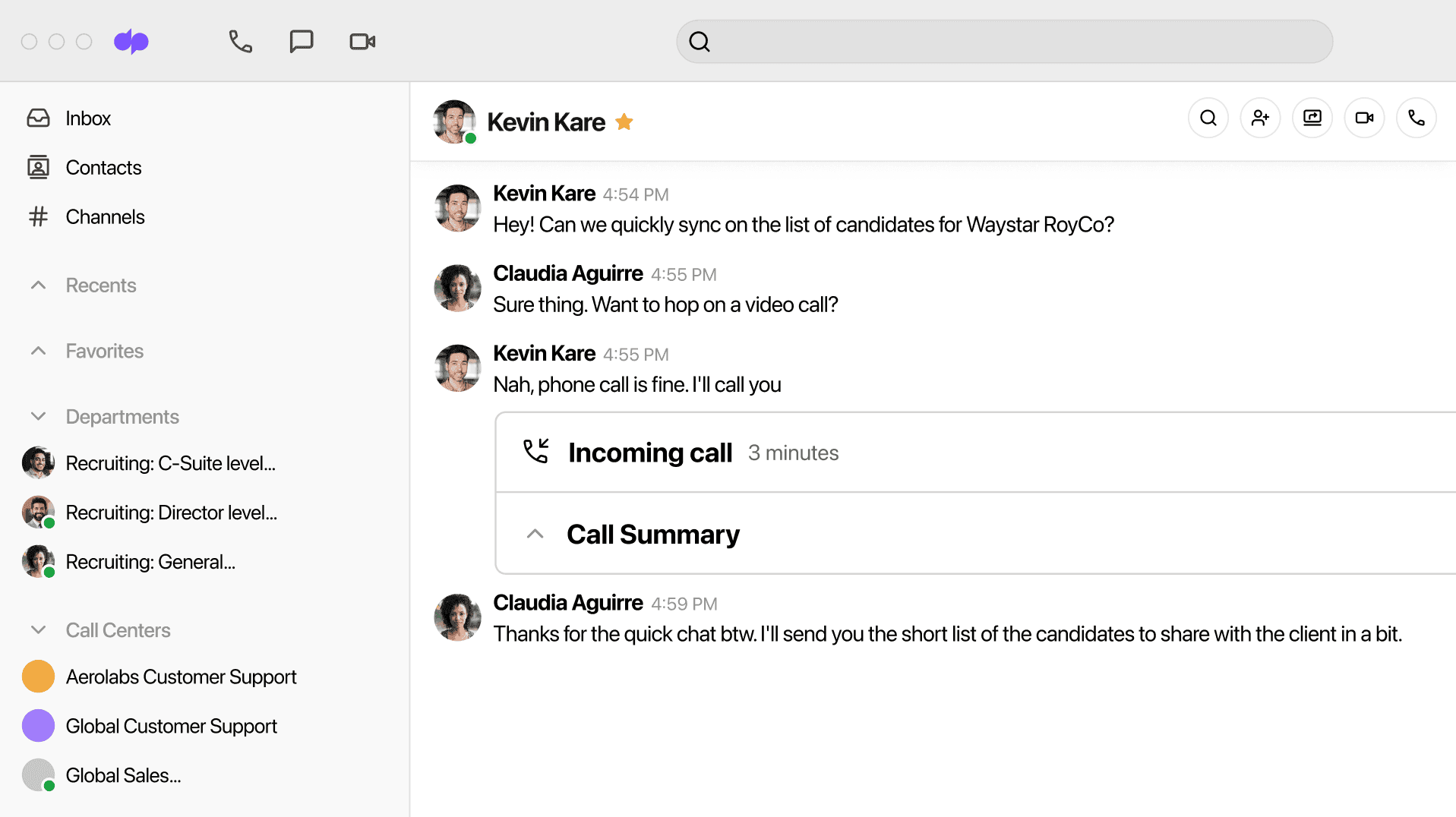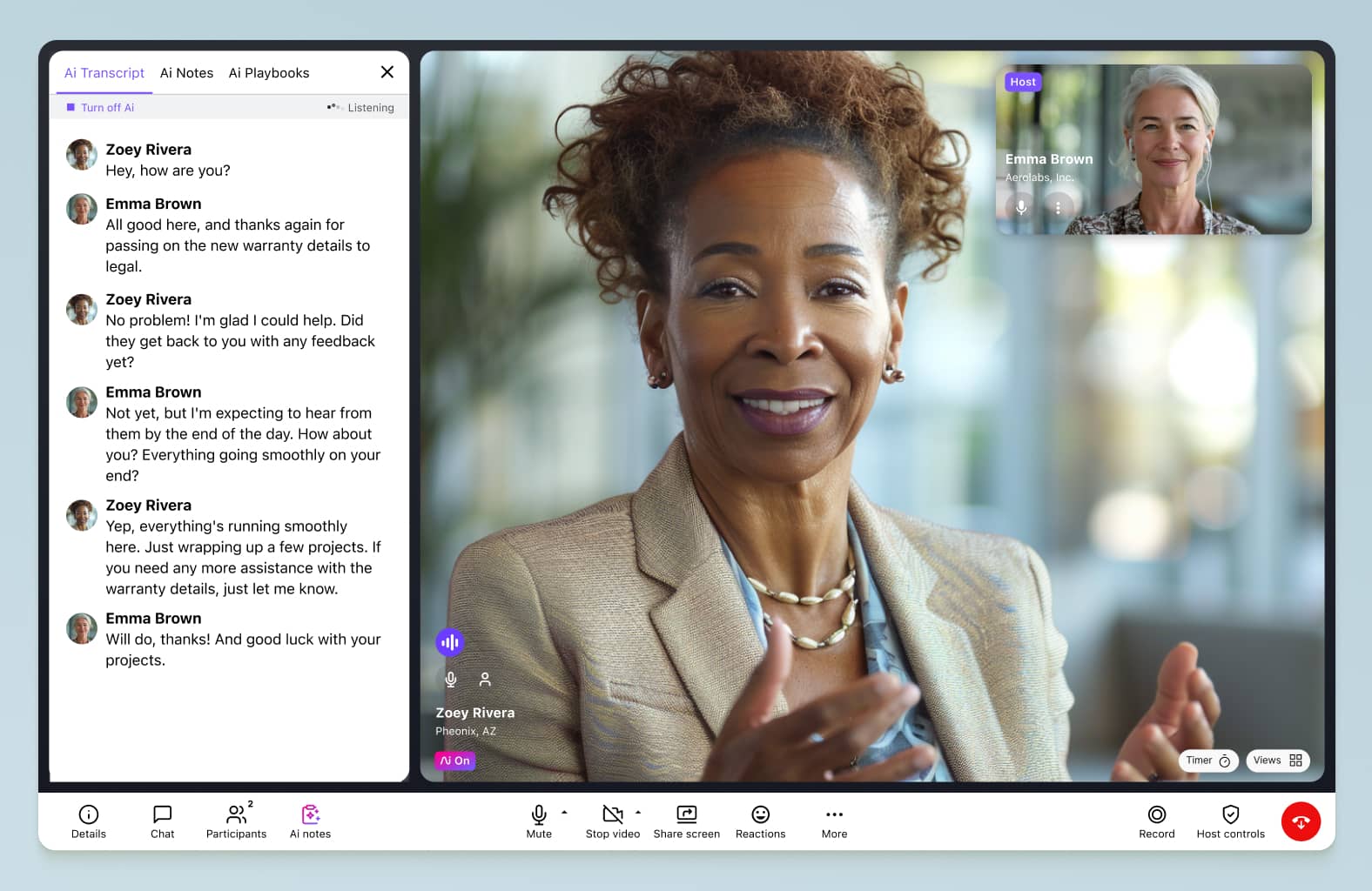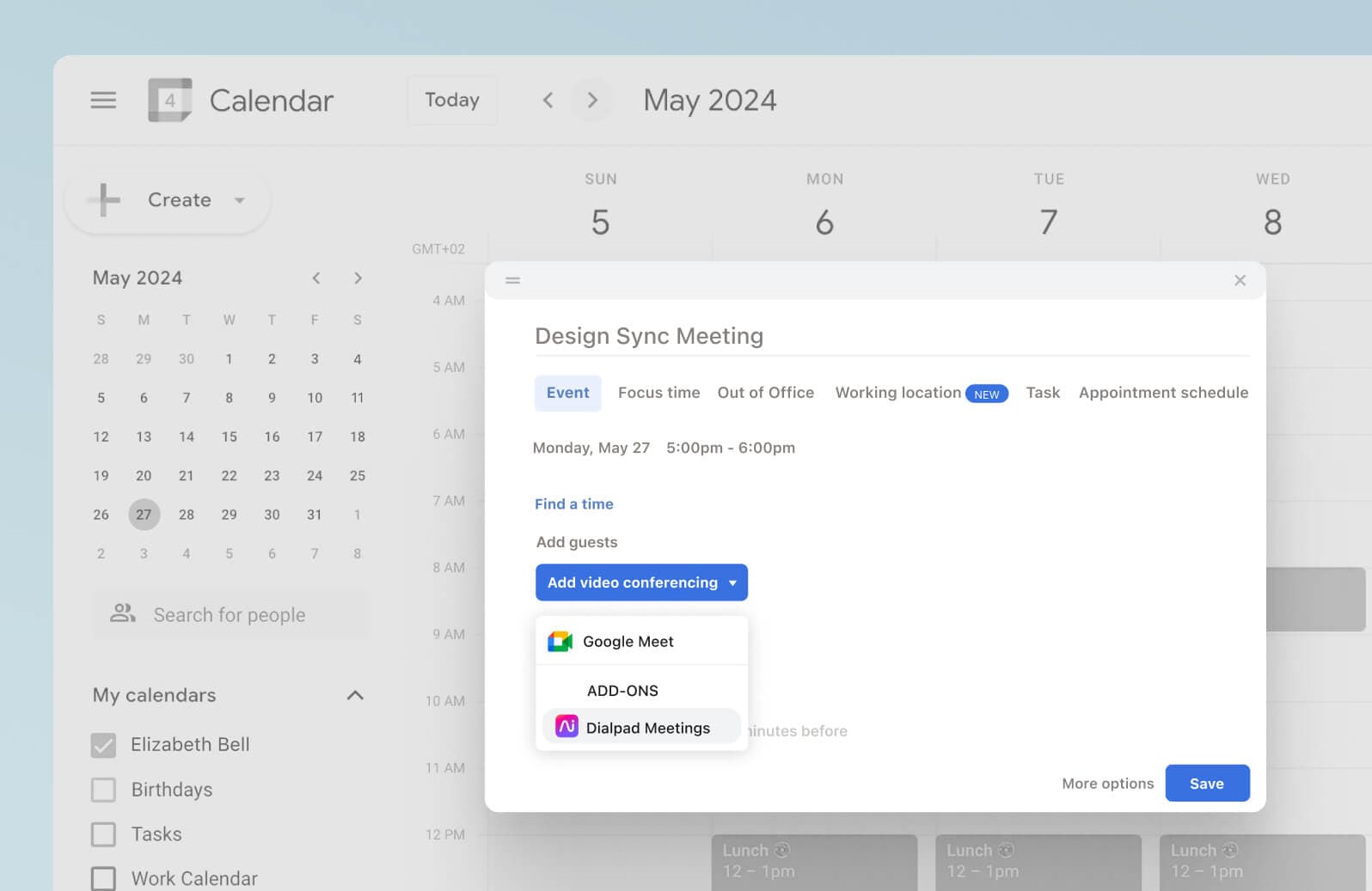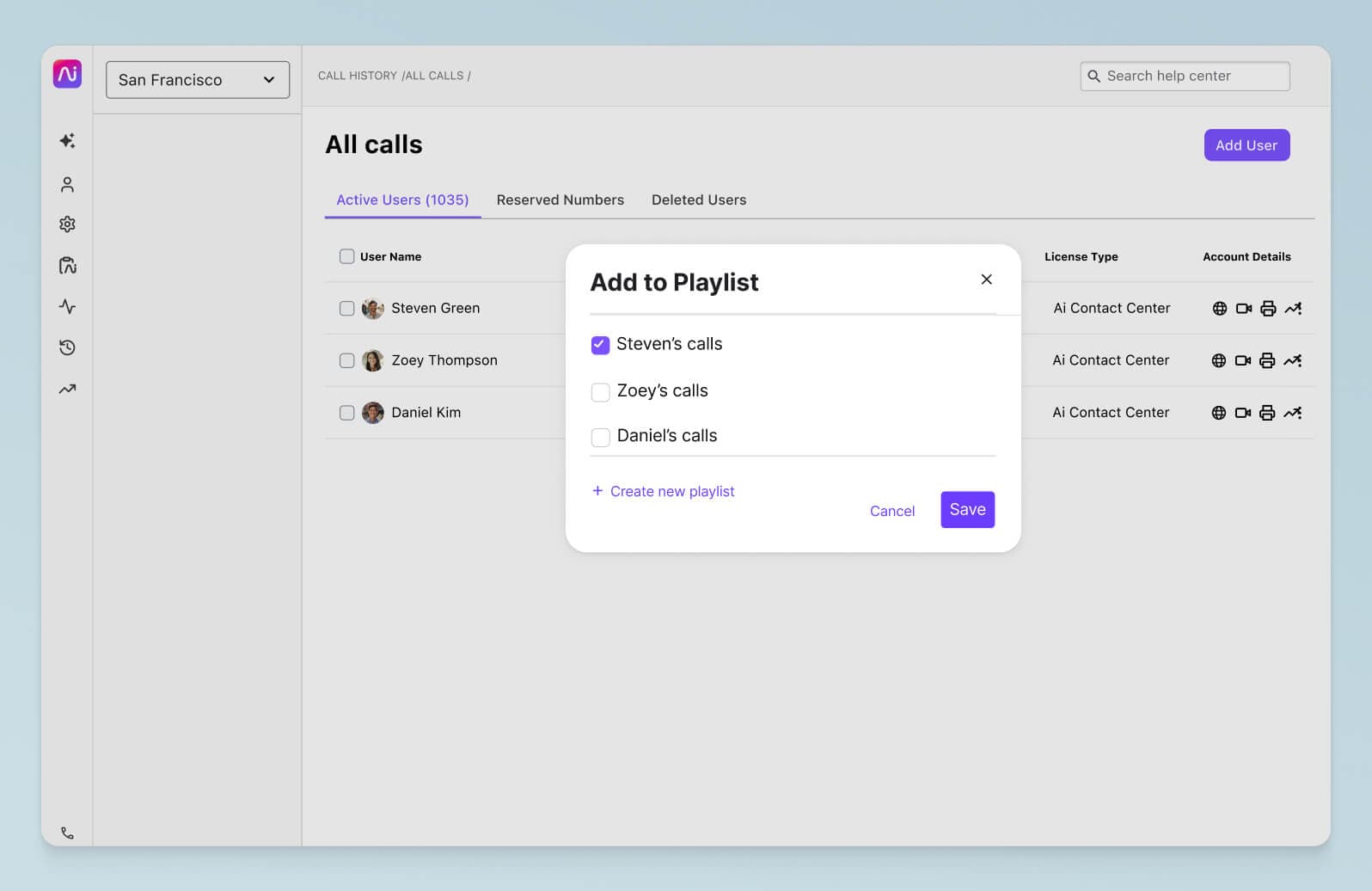How to build a strong remote culture: An in-depth guide

HR Business Partner at Dialpad

Tags
Share
Let’s face it. Businesses and organizations have been moving toward hybrid and remote work for a while now. (Sure, the pandemic may have sped that up, but it’s not a new phenomenon.)
And even though many employees are saying that they love remote work, there’s one big challenge from the company’s standpoint: How can you nurture and keep building a strong company culture when everyone is scattered around the world?
In this guide, I’ll walk you through how we at Dialpad are building our remote team culture.
Full disclosure, like most ambitious and audacious company-wide initiatives, this is always a work in progress for us. Here is just some of what we learned, and how we go about building culture.
What is remote work?
Remote work is essentially when the employees of a company do their work outside of the main headquarters or physical office. In most cases, they work from home, but really, they could be working from anywhere they want.
Some companies can be fully remote, with no brick-and-mortar premises at all, while others operate a hybrid model where employees split their time between office and home—or there may be a combination of permanently-office-based and permanently-remote staff.
Often, fully remote businesses will rent out office spaces like WeWork offices, where employees can occasionally come together for client meetings or projects that require in-person contact.
(Fun fact: WeWork uses Dialpad as its communications platform.)
What is remote culture?
Think of remote work culture as an extension of your overall company culture, which encompasses everything from your team’s values and expectations, the way employees communicate, their habits and behaviors, and more.
You may use similar tools and workflows as other companies, but each company has its own culture.
Of course, it’s much harder to maintain a strong culture when everyone’s scattered to the winds, but it’s worth it—companies that invest in this philosophy tend to have lower staff churn and higher profits.
👉 Dialpad tip:
One underrated part of company culture that you can maintain, even with a remote team? The water cooler! Learn more about how to set up a virtual watercooler.
A few examples of companies adopting remote working practices
With all this talk about companies “moving toward remote work,” what about organizations in industries like healthcare, or contact center teams, which traditionally have been mostly in-office?
After all, not every business is a Help Scout or tech company that can have video calls from home.
Glad you asked. Here are a few examples of how remote teams in different industries are building a positive culture—even with distributed teams!
TED
With an international work-from-anywhere culture, TED chose tools that were designed to help their staff recruit on the go. “When I’m making technology decisions for TED, I’m always ensuring that the solution I pick is self-sufficient, easy to service, and low maintenance,” says Francil Richards, TED's Senior IT Manager. “Dialpad enables this type of lean IT approach."
The Financial Times
With a team that includes faculty in New York and program developers in Paris, The Financial Times team is over 50% remote (and that proportion is growing).
“Picking up a desk phone is now a novelty,” says Lee Arthur, their Managing Director. “Our employees expect to speak with customers on their smartphones, laptops, or tablets.”
Code 42
With over 500 employees and a few global offices around the world, Code 42 knew they wanted to invest in building a strong remote culture—and they knew where they didn’t want to invest. “We no longer wanted to spend extensive time, energy, and resources on telephony,” says Jerod Lindblom, their VP of IT. “We want everyone to be able to work from anywhere.”
See how Jerod and his team managed that transformation!
Why is it important to build a healthy remote work culture?
It helps your remote employees feel connected
There’s no avoiding the fact that remote staff miss out on the social aspect of a traditional work environment—watercooler chat, office in-jokes, and other “invisible” elements that improve teamwork behind the scenes.
Working in isolation can be lonely and boring when you go all day without face-to-face contact from another human. Foster a culture that encourages employees to check in on each other and stay connected.
It contributes to overall employee engagement and retention
Teams are more productive when people get on well, have good work-life balance, and are happy and fulfilled in their work. And more importantly, they stay with you longer.
An incredible 85% of businesses say that flexible remote policies have improved their overall productivity, and it shouldn’t be surprising.
One thing to keep in mind here is that fully remote teams and hybrid teams have slightly different challenges. A good hybrid work culture should make integration of remote and in-office employees a priority—something that 100% remote teams don’t have to contend with (though they have other obstacles to worry about).
It helps you recruit stronger candidates
One of the biggest advantages of remote work is that it allows you to recruit new hires from anywhere in the world. By leveraging international hiring best practices, you can attract the best talent and a more diverse team. Your remote culture plays a big role in creating a company that people want to work for. In fact, 83% of employees say that culture is a top factor when they’re deciding between companies.
Promoting your unique culture will attract candidates who are not only high-performing, but also aligned with your core values.
We have a pretty robust recruitment technology at Dialpad, and when we recruit remote candidates, we use Dialpad’s video conferencing feature during the interview! This way, we can both show them how our product is designed for remote work, but also put our own creation to the test.
👉 Further reading:
Learn more about how businesses are using recruitment chatbots to get more qualified candidates in the door quickly.
4 signs of a healthy remote culture
Company culture is not always created on purpose. It often develops organically as people work side-by-side. And with remote work, it’s vital that you intentionally create a strong sense of culture that binds dispersed teams together.
Here are some crucial elements to pay attention to:
Clear, well-managed expectations
People aren’t mind-readers. If you want them to do something a certain way, you need to tell them! As with so many aspects of business, clear communication is at the heart of a successful and productive team. And that is twice as true for remote work.
For managers and directors, the first step in a healthy remote culture is setting clear expectations of how things will work. What can they expect from employees, and what can their direct reports expect from them?
And from an HR perspective: Do remote workers have to do specific hours each day or can they set their own schedule? Do they get a stipend for home-office equipment? And in general, how to use a virtual assistant successfully?
Decide which communication channels should be used for which purposes. Typically, that means email for formal documents, instant messaging channels for casual discussions, and team conference calls for monthly town hall-style meetings.
In fact, we use Dialpad for almost any kind of communication! The desktop and mobile app lets us making phone calls, have video meetings, and even send instant + SMS/MMS messages—all from one place:

Easy-to-use communication tools (that are actually being used!)
To make it easy for remote employees to stay connected, you need the right tools. Whether that’s project management software or a business phone system, or a UCaaS platform, your staff need to be able to talk to each other even if they’re not in the office.
One of the best things about Dialpad is that our employees can use it across different devices. Macs, PCs, iPhones, Androids… No matter what we’re all using, we get one cohesive experience.
And our customers, prospects, and even job candidates like it too, since they can join a video conference with our team without downloading anything. All they have to do is click a link to join from their web browser (let’s just say it makes interviews go a lot more smoothly):

TL; DR - A remote workforce needs to be equipped with remote-friendly tools! Bonus tip… The more intuitive and easy-to-use those tools are, the more likely people are to use them.
Transparent communication
Transparency in the workplace is critical to building a culture of trust, and it has to come from the top down. We’ve mentioned the importance of clear expectations, but managers should also have virtual meetups with their remote employees regularly.
Video chat is perfect for this face-to-face communication, whether it’s 1:1 or via a team meeting.
One of the challenges with having a remote workforce is that you often have employees scattered across different time zones, which means not everyone can make company-wide meetings.
In these situations, it’s good to record those meetings and have transcriptions of those meetings available for folks who couldn’t attend. Again, Dialpad is useful for us here because not only can we easily record meetings, it also transcribes our calls—in real time:

👉 Dialpad tip:
Foster open communication by using group threads rather than DMs to communicate information (unless the message needs to be private, of course). A culture of transparency helps break down silos and improve cross-team collaboration because it prioritizes giving everyone a 360-degree view of what’s happening across the company.
Belonging and inclusion
This should go without saying, but in order to build trust, it’s important to make sure your remote employees feel like they belong, no matter their race, gender identity, or sexual orientation.
A few common ways companies approach this is by offering training on diversity and inclusion, and setting up dedicated Employee Resource Groups (ERGs). At Dialpad, we have ERGs such as DialOut (for LGTBQ+ folks), Color ID (for people of color), and more—and we’re happy to see many allies joining these groups!
7 tips for building a successful remote culture
In some ways, it’s easier if you’re a fully remote company, because there won’t be any disparity between remote and in-office staff. Either way, here are some tips on how to create a successful remote culture.
1. Define what your remote culture (and subculture) looks like
First step: Think about what you want your remote culture to be, in terms of working styles and practices. This should align with your core company values, so that everyone understands the goals you are trying to accomplish.
Consider how you’ll communicate with employees, and which tools and channels you’ll use to provide information. There should be a commitment to treat all employees equally no matter where they’re based, such as always including remote workers in team meetings held at the office, and holding virtual team-building activities.
2. Have a strong set of remote work policies
It’s more difficult for a distributed team to grasp the nuances of your culture, so it’s important to document not only the vision but also the way it will work in practice. Create a set of “work rules” that reflect remote culture, and make it easy to understand for new team members as well as old hands.
When your remote work policy is written down, it becomes more concrete and everyone will know what they should do and how they should act. To cover all bases, ask for input from the entire team when you draw it up.
The policy should include guidelines on appropriate language and content in communications, expectations around flexibility, etiquette for video conferencing (no to PJs on client calls, yes to appearances from cute pets), and so on.
👀 Thinking of moving to hybrid work?
Grab the Hybrid Work Playbook, which includes real-life case studies and breaks down all things hybrid + remote, from building and sustaining a hybrid workforce to equipping your team for success.
3. Have an internal comms person
Internal communication is so critical to the success of your remote culture that you should actually appoint an official person for this role. This employee will act as a steward for company culture across the cloud phone system and be a champion for remote staff. It needs to be someone who understands the value of remote workers and can communicate this to the high-ups.
They can also disseminate information smoothly throughout the organization, set up channels for social chats, and coordinate activities with services like teambuilding.com which provide a variety of facilitated virtual and in-person team-building exercises designed to bring your team together. This also helps make sure that nobody gets left out when it comes to virtual team bonding sessions.
4. Conduct feedback sessions regularly—you won’t get it right the first time
Your remote culture and policies have to be ready to adapt to changes, and that includes using feedback from employees! In a transparent organization, feedback is positively encouraged, and all staff should feel comfortable expressing concerns or suggestions.
The aim is to create an environment where everyone contributes, so you might need to actively ask quieter workers for their input. Without this structure, feedback sessions will get taken over by the loudest people in the room.
(You could actually provide training on how to give constructive feedback. Remember to ask for feedback about the feedback system—do staff feel comfortable sharing ideas and disagreeing with others? Anonymous polls or surveys are a good initiative for those on the shy side.)
5. Have an intentional meeting culture
We’ve all heard of “Zoom fatigue” caused by constant virtual meetings. (*Other video conferencing platforms are available!*) But for remote workers, video calls are often the primary way to get to know colleagues better.
You just have to make sure you’re not having meetings for the sake of having meetings! Let everyone know the reason behind them—are you introducing new hires, liaising with clients or stakeholders, or just having a catch-up? Send out an agenda ahead of time, and stick to it.
While video calls can be useful, we also have “No-meeting Thursdays,” to give our team a bit of a break from the back-to-backs.
6. Have asynchronous communication options
There are times when a “live” conversation isn’t required. Asynchronous communication channels such as email, SMS, and chat apps don’t need an immediate response. They recognize that people may be busy, or need time to consider their reply, or find out more information before getting back.
This also takes time differences into account—instead of calling someone when it’s midnight for them, just send a message and expect them to get to it in the morning. It’s helpful to be aware of time zones and to know when official holidays take place in different countries.
Again, the nice thing about Dialpad is that we don’t just have to call or have video meetings with people. We can send them messages too with the understanding that they’ll get to it when they can.
7. Re-evaluate and revamp your onboarding process
Your onboarding process needs to reflect your remote team culture. So, include details about your company culture and “work rules” in your job descriptions so that new employees know what to expect, and you’re more likely to attract those who are a good fit.
Beyond that, make sure they have the right software and hardware before they start, and that they understand how to use it correctly. (We deliver both training and feedback online on enterprise communication solutions for our new remote employees.)
We also assign more experienced team members as mentors to help with onboarding and orientation, which we’ve gotten great feedback about.
A few signs that your remote culture needs reworking
There are lots of benefits to working remotely, but there’s also the potential for things to go wrong. If you spot any of these signs, it might be time to make some changes.
Your team productivity is declining
Signs of reduced productivity include projects not getting completed on time, calls not being answered, and unhappy customers. But that doesn’t necessarily mean a remote employee decided to binge season two of Tiger King instead of working on that client presentation.
Before berating them for slacking off, find out why this might be happening. Are they struggling with tools or workflows? Are they suffering from burnout, anxiety, or lack of motivation? Is there a breakdown in communication?
There’s a lack of activity in the tools you’re providing
We mentioned the importance of choosing tools that work with your remote culture. If employees are not engaging with the tools you provide (for instance, not using time trackers or task management systems, or leaving their video off during meetings) it could be time to consider changing them.
Find out what staff think of the tools. If they’re difficult to learn and use, or they have frequent glitches, employees will struggle to stay engaged or productive. You could also introduce gamification and incentives to boost engagement.
Team members aren’t taking breaks
Everyone needs a break, and if people aren’t taking them, you need to find out why. It could be that they’re swamped by work, or they want to prove how hard they’re working. Or even that they enjoy the work so much that they end up going over their hours without realizing.
Either way, you should reiterate the importance of regular breaks and a healthy work-life balance, and assure them that it’s fine with you. The last thing you want is for people to suffer burnout. Let everyone know that you’re more focused on output and achievements than total hours worked.
3 essential tools for building a successful remote culture
A good unified communications platform
Good communication is essential for remote work. And for most companies, that means communicating via voice calls, video meetings, and messaging. If you can, try to use versatile tools that can do multiple things well. With all your tools easily accessible from one place, productivity gets a boost—plus, you’ll save money because there’s no need to subscribe to lots of different apps.
Again, we use Dialpad here, because it also has tons of integrations with other productivity and project management apps that we use, like Google Calendar:

But really, you can use whatever your team is comfortable with.
A remote onboarding system
If you’re fully remote, or recruiting from far afield, you’re going to need a strong remote onboarding process. That includes how you conduct interviews virtually, make calls to check references, and wrap up job offers and contracts—and that’s only a part of it!
Video is perfect for remote training sessions—and if you have a tool that has an in-meeting chat feature, even better. This way, new employees can ask questions and stay engaged without interrupting the presenter.
Another feature in Dialpad that our sales team in particular likes is the coaching playlist feature. They can take call recordings of really good sales conversations, add them to a playlist, and share them with new sales reps to listen to and learn from on their own time:

A project management platform
For remote culture to work smoothly, managers should have a real-time overview of the workflows so they can see what everyone’s working on without needing to constantly ask for updates.
For marketing and design teams, it’s also helpful if managers and project managers can create and assign tasks easily, and communicate these to the employees.
A good project management tool like Asana, Trello or Wrike is great for building your project management workflow and keeping all your projects and tasks organized.
Is your remote culture good to go?
If it’s not, you need to fix it, this is your chance to get it on the right path! Developing a strong remote culture will take hard work from everyone involved, and you need buy-in at all levels to make it work.
Whether you operate a fully remote or hybrid model, communication is the foundation for success. In a team that communicates well, there is transparency, trust, efficiency, and engagement—that’s why a truly unified comms platform like Dialpad will make all the difference.
Build a strong remote culture with the right communications tools
Dialpad's platform is designed for exactly that. Have conference calls, video meetings, and messaging convos, all from one intuitive app. Try it for free with a 14-day trial! Signup takes a few minutes, and you'll be set up with a virtual phone number too.








